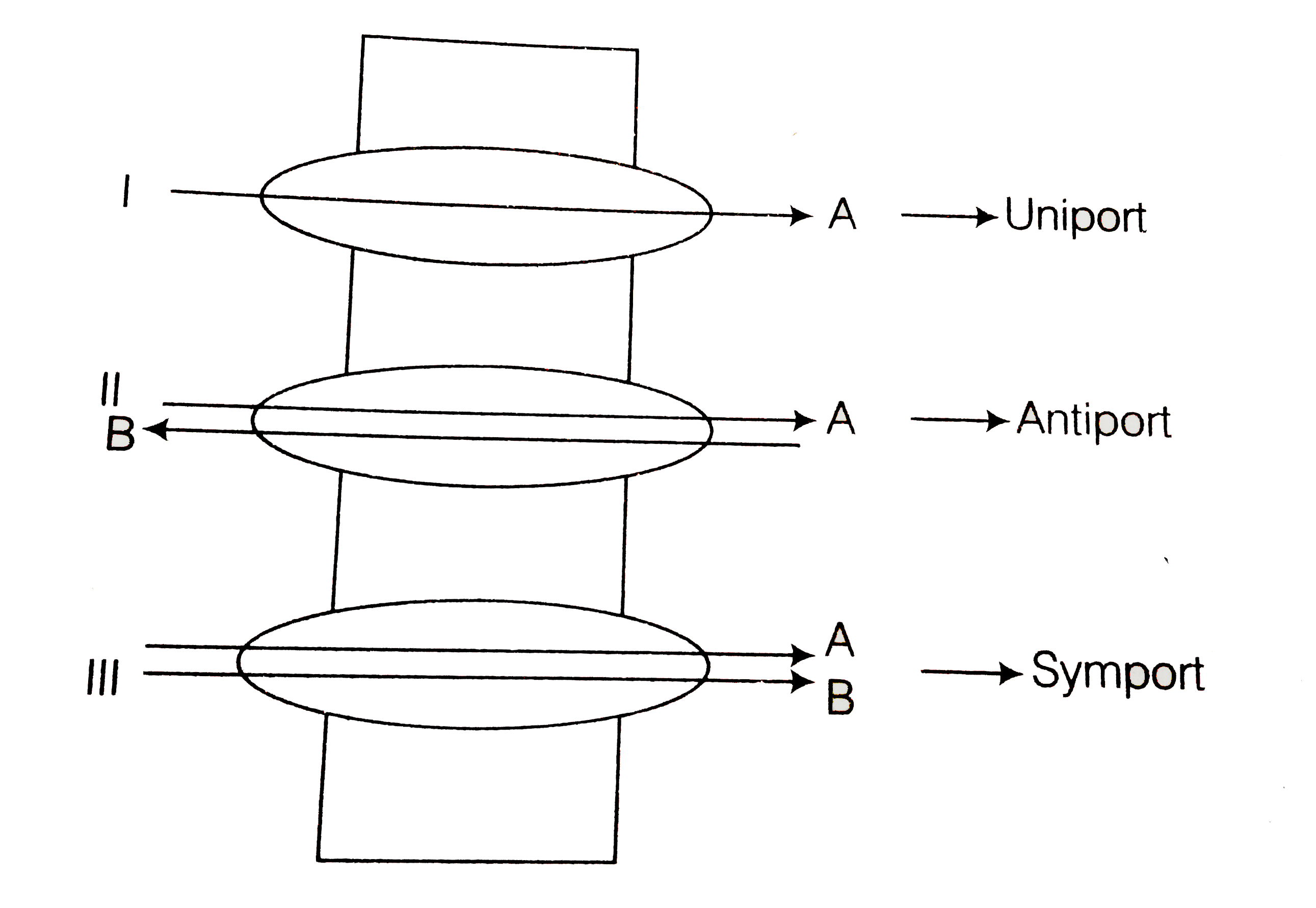Type of transport across the biomembrane without the help of proteins is
Facilitated diffusion
Active transport
Simple diffusion
Diffusion via symport
The correct Answer is:C
Step-by-Step Solution:
1. Understanding the Question: The question asks for a type of transport across the biomembrane that does not involve proteins.
2. Identifying Types of Transport:
- Facilitated Diffusion: This process requires carrier proteins to help move substances across the membrane along the concentration gradient.
- Active Transport: This process uses energy (ATP) and involves proteins to move substances against the concentration gradient.
3. Defining Simple Diffusion:
- Simple diffusion is a passive transport mechanism that allows substances to move across the membrane directly, without the need for proteins. It occurs along the concentration gradient, meaning substances move from an area of higher concentration to an area of lower concentration.
4. Examples of Simple Diffusion:
- A common example is the diffusion of gases like oxygen and carbon dioxide across cell membranes. Another example is the spreading of perfume in a room, where the scent molecules move from a concentrated area to a less concentrated area.
5. Conclusion: Based on the definitions and examples, the type of transport across the biomembrane without the help of proteins is Simple Diffusion.
Final Answer:
The type of transport across the biomembrane without the help of proteins is Simple Diffusion.
---
- Facilitated Diffusion: This process requires carrier proteins to help move substances across the membrane along the concentration gradient.
- Active Transport: This process uses energy (ATP) and involves proteins to move substances against the concentration gradient.
- Simple diffusion is a passive transport mechanism that allows substances to move across the membrane directly, without the need for proteins. It occurs along the concentration gradient, meaning substances move from an area of higher concentration to an area of lower concentration.
- A common example is the diffusion of gases like oxygen and carbon dioxide across cell membranes. Another example is the spreading of perfume in a room, where the scent molecules move from a concentrated area to a less concentrated area.
The type of transport across the biomembrane without the help of proteins is Simple Diffusion.
Topper's Solved these Questions
- BOOK - DINESH PUBLICATION ENGLISHCHAPTER - STRUCTURE OF THE CELLEXERCISE - Check your Grasp17videos
STRUCTURE OF THE CELL
- BOOK - DINESH PUBLICATION ENGLISHCHAPTER - STRUCTURAL ORGANISATION IN ANIMALS EXERCISE - Check your grasp10videos
STRUCTURAL ORGANISATION IN ANIMALS
- BOOK - DINESH PUBLICATION ENGLISHCHAPTER - THE CELL : THE BASIC UNIT OF LIFE EXERCISE - CHECK YOUR GRASP12videos
THE CELL : THE BASIC UNIT OF LIFE
Similar Questions
Knowledge Check
- Question 1 - Select One
In passive transport across a membrane, when two protein molecules move in opposite direction it is called as
AuniportBantiportCsymportDco-port. - Question 2 - Select One
Many molecules can move briefly across the membrane without any requirement of energy and special membrane proteins. This is called _______.
Aactive transportBpassive transportCfacilitated diffusionDAll of these
When only one type of solute molecule enters the cell with the help of carrier protein, the process is
View SolutionIn a cell, proteins are formed with the help of
View SolutionThe carrier - mediated cotransport in which a solute is actively transported across a membrane against the gradient of electrochemical potential by coupling the uphill transport of one solute to the downhill transport of another in an example of
View SolutionFacilitated transport helps in the absorption of A and B with the help of carrier proteins. fill the blanks A and B.
View SolutionMovement of hydrophilic substances according to the concentration gradient with the help of membrane proteins without expenditure
of energy is calledView SolutionThis is an example of transport protein
View Solution

